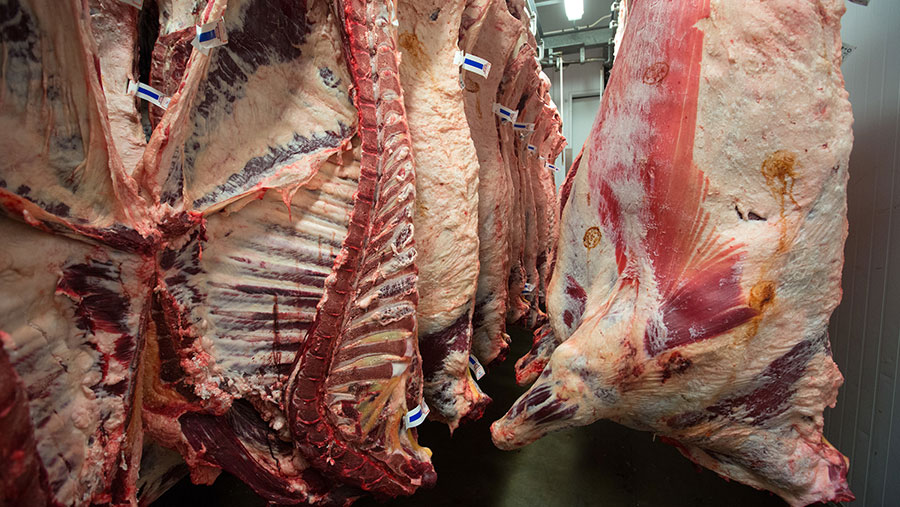Opinion: Losing the Europ system for beef is a Brexit benefit
 © Tim Scrivener
© Tim Scrivener I’m rather enjoying all this climate change malarkey.
If global warming means that a few days away in the Forest of Dean over Easter will always be that pleasantly warm and sunny, I think I may have to seriously look at installing coal-fired central heating and buying a Hummer. I mean, what have polar bears ever done for us anyway?
However, while the scenery and the weather in the West Country were just the ticket, one aspect of our break was rather less memorable.
See also: Trial shows huge merit of using EBVs with beef herds
As a family of avowed meat eaters, we were all rather looking forward to firing up the grill for a steak supper, after a day canoeing on the Wye.
But if the steak purchased from a local “traditional family butcher” was anything to go by, then it is hardly surprising that beef consumption in the UK is in decline.
Overlean, tough and tasteless to the point of inedibility, it was without doubt my most disappointing epicurean experience in a long while.
Given the barrage of largely unfounded opprobrium that the red meat sector has to endure on a daily basis, the industry should surely be striving to ensure that, when it comes to eating beef, every consumer experience is a positive one, rather than churning out overpriced, sub-standard fare that will kill demand faster than any amount of virtue-signalling nonsense the Guardian chooses to print.
And this is where Brexit could potentially provide us with an opportunity to win back some of that lost ground and reacquaint consumers with the noble meat of “Olde England”.
Since 1981, EU law has required all beef carcasses to be graded according to the Europ grid, which was introduced largely for the purposes of harmonising beef intervention standards. So in essence, we have, for the past 40 years, been producing beef to a standard that literally nobody wants.
As with most interventionist strategies, this has resulted in an adverse array of unintended consequences, not least eating quality being sacrificed for the sake of arbitrary carcass uniformity.
It has given rise to a plethora of excessively lean breeds of cattle that have no place on the plate of any discerning meat eater. It has subsequently turned beef buying for the consumer into something of an expensive lottery.
Meanwhile, beef grading in the US has gone the opposite way, adopting a system that places far more emphasis on eating quality, with marbling or intra-muscular fat levels a key determinant of that quality.
Growth in demand for the more expensive and more heavily marbled USDA “Choice” and “Prime” grades in recent years, and the stellar success of the rather ironically named “Certified Angus” brand (that stipulates a minimum level of marbling rather than any minimum percentage of actual Angus genetics), has driven significant growth in the value of both their domestic and export beef markets.
This has resulted in better returns to the producer and happier customers.
Beef quality in the US is, as anyone who has travelled there recently will almost certainly attest, consistently better than much of what is available here. Given our heritage as the home of the world’s best-tasting beef breeds, that is a sadly ironic situation.
It is, however, one that, with a little creativity and joined-up thinking, we could so easily reverse. The Europ grid is potentially one casualty of Brexit that could benefit us all.
